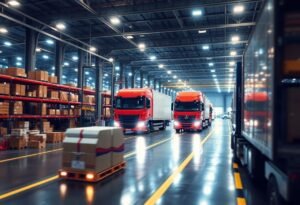The Internet of Things (IoT) is revolutionizing the way we think about transportation systems, significantly impacting innovation and efficiency in this sector. As cities grow and the demand for smarter solutions increases, understanding the role of IoT in shaping transportation is essential.
Transforming Urban Mobility with IoT
The adoption of the Internet of Things has transformed urban mobility by enabling real-time communication between vehicles and transportation infrastructure. With smart traffic signals that can adapt to real-time traffic conditions and connected vehicles that share data with each other, cities can improve traffic flow, reduce congestion, and enhance safety. This technology allows for the implementation of intelligent transportation systems (ITS) that are capable of optimizing routes and minimizing travel times. By harnessing data from IoT devices, cities can create more efficient public transit systems, ensuring that they meet the needs of their residents.
Enhancing Freight Logistics through IoT Innovations
In the world of freight logistics, the Internet of Things plays a pivotal role in streamlining operations. By employing IoT sensors and devices, transportation companies are able to track shipments in real-time, monitor environmental conditions, and manage resources more effectively. This real-time visibility into the supply chain minimizes delays and reduces costs significantly. Moreover, predictive analytics powered by IoT data help organizations anticipate potential disruptions, thus enhancing overall service reliability.
Improving Safety and Security with IoT Solutions
One of the most notable impacts of IoT on transportation systems is the improvement in safety and security. With the integration of IoT-enabled cameras and monitoring systems, authorities can monitor roads and public transport continuously, allowing them to respond to incidents more swiftly. Additionally, connected vehicle technologies feature advanced driver-assistance systems (ADAS) that significantly reduce the risk of accidents. The potential for enhancing emergency response times represents a considerable breakthrough in urban safety.
Reducing Environmental Impact through Smart Solutions
The environmental benefits attributed to IoT in transportation cannot be overlooked. By optimizing routes and reducing idle times, the implementation of IoT-driven systems contributes to lower greenhouse gas emissions. The integration of smart sensors for vehicles allows for efficient energy consumption, making electric and hybrid vehicles more user-friendly. Moreover, these technologies foster the development of smart eco-friendly transportation solutions that are crucial to creating sustainable urban environments.
Facilitating Autonomous Transportation Advances
As autonomous vehicles continue to evolve, the Internet of Things plays a critical role in their development. IoT is integral for the vehicle-to-everything (V2X) communication that enables autonomous cars to navigate complex environments safely. This communication facilitates the sharing of information about surrounding traffic conditions, road hazards, and even weather updates, thus allowing autonomous systems to make informed driving decisions. The continuous improvement of these technologies proves essential for the future of autonomous public transport.
Fostering Collaboration and Innovation in Transportation
The implementation of IoT solutions in transportation fosters collaboration among various stakeholders, including government entities, private companies, and citizens. Such partnerships promote innovation in mobility solutions that are tailored to unique urban challenges. By leveraging collective perspectives and data-driven insights, cities can implement policies that not only enhance the efficiency of transportation networks but also prioritize connectivity and inclusivity.
Disclaimer: The information provided in this article is intended for educational purposes only and reflects current trends and innovations in IoT and transportation systems. For more detailed insights, please consult relevant experts in the field.





















